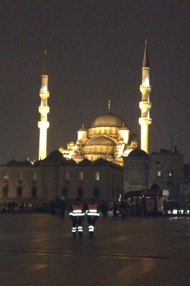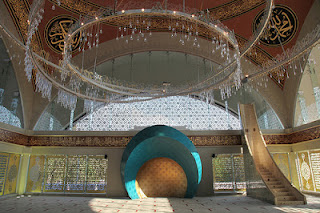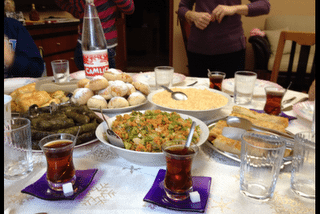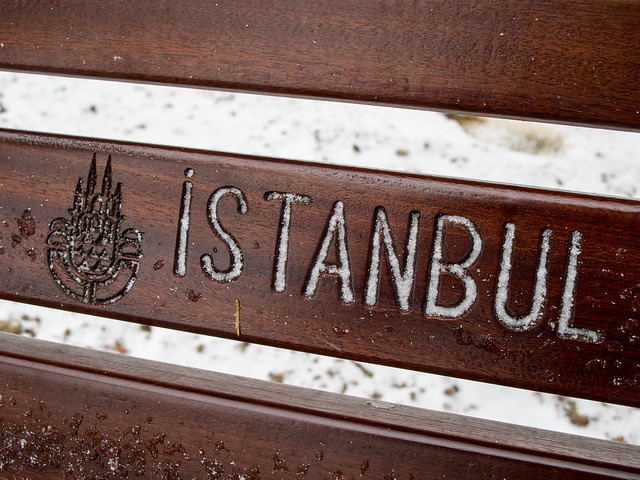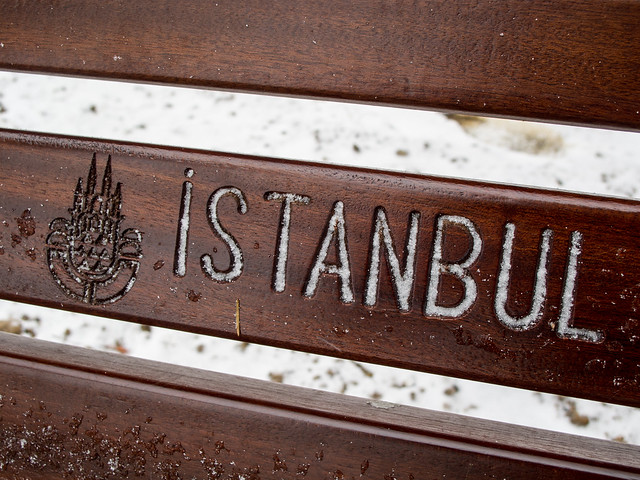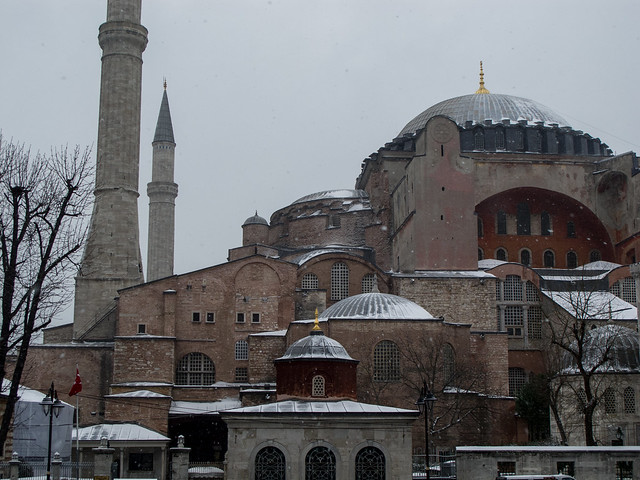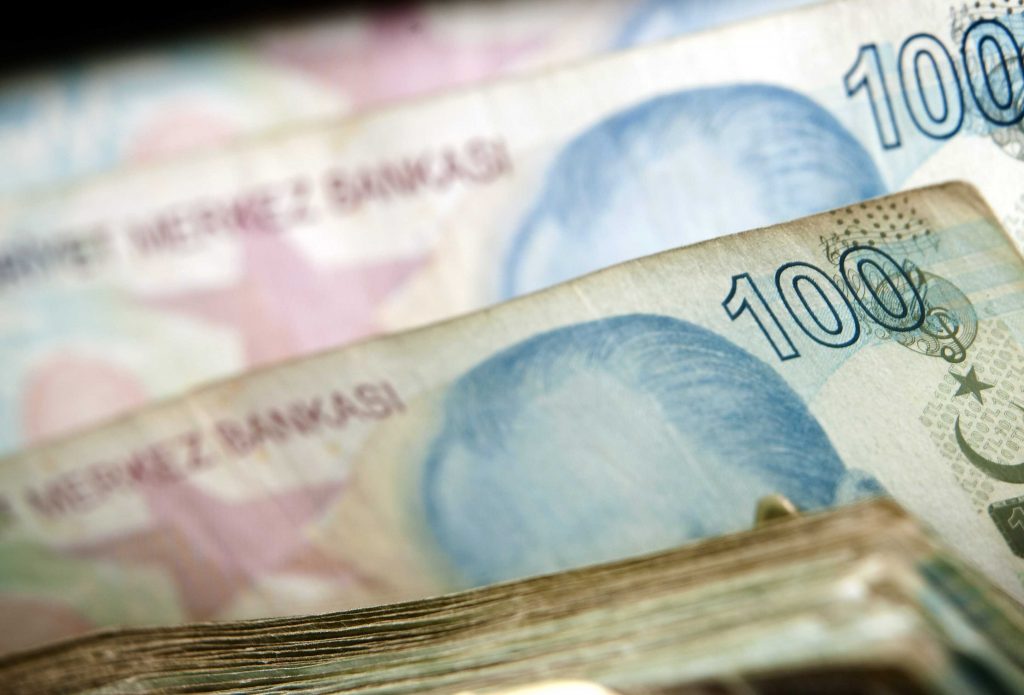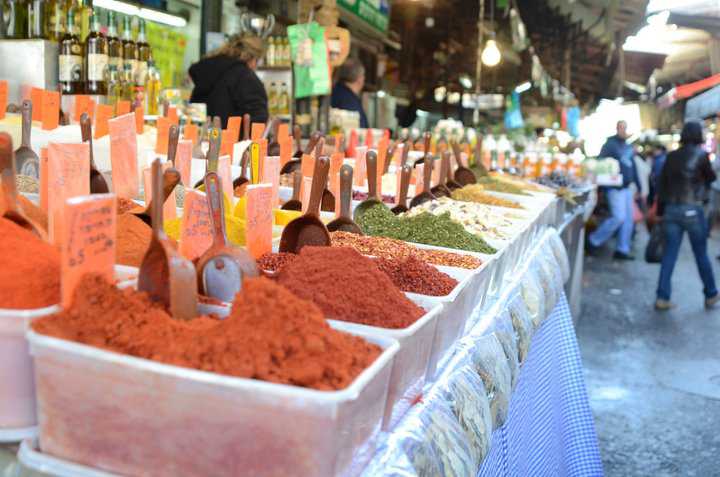By Global Engagement Summit • March 20, 2012 at 5:30 pm
Day Four: Conversations on conservatism, social outlook on secularism
“The day is Tuesday. The place is Istanbul.” – Gora Dan(iel Olson)
It’s midnight and I’m sitting in the lobby of Hotel Monopol trying to start this blog post. Since arriving in Istanbul, this has become a ritual. We do so much during the day here that it’s difficult to coherently summarize everything. From two keynote speakers, visits to two mosques (one unofficial, the result of an adventure), shopping, and lots of small meals, I’m afraid to dive into any kind of conversation about my experiences today with the fear that I won’t do any of them justice.
Despite that fear, I’m going to try anyway.
Our first keynote speaker for today was Serra Titiz, owner of Mikado Consulting. Serra came to the hotel this morning to talk to us about social entrepreneurship and her accomplishments in working with movements toward social change, from women’s rights to more economic achievements in civil society organizations. The statement that stuck out to me most during her presentation was the idea that an active pursuit of social entrepreneurship involves “lifelong learning.” This concept is interesting because it encourages the idea that working in an area of social entrepreneurship constantly prompts dialogue, knowledge, expansion of one’s understanding of the field, and personal growth as an individual interested in social innovation. It’s also quite daunting to think about lifelong learning—especially going back to Ayse Inam’s presentation to us on “visions” and “inspirations.” As Northwestern students, the common goal in our community is to achieve financial success and personal happiness by gaining an incredible amount of knowledge to prepare us for a career. There is a sense that education has a beginning and a concrete ending before diving into a job—we go to college, pursue post-graduate studies, and end up with a lifestyle in which we find a solid career or try out many of them. Serra’s explanation on social entrepreneurship does not fit this financial and cultural “mold” that is associated with the American pursuit of financial and economic success. Can the concept of “lifelong learning” exist in harmony with the American “dream” of finding a steady job and sticking with it for the sense of consistency? I believe so—and I’m curious to see how a hybrid of these two conceptual outlooks can lead to achievement.
Our second event today was a visit to an exhibit that was inspired by social media, art, and film being used to make statements on social, cultural, economic, or even religious issues within Turkish society. We saw a photo exhibit called “Kemal’s Dream” that sought to eliminate stereotypes about various neighborhoods within Istanbul and Turkey. The interpretation of this exhibit in our group was incredibly diverse—some saw the exhibit as an important, effective social statement on the importance of secularism within a society and an abolishment of conservatism because of the social and cultural limitations that it sets on society. Others viewed the photo exhibit as a blatant or disturbing attack on conservatism and conservative people within Turkey, as if Ahmed Patol, the artist who compiled the exhibit, was actively promoting a secular state and calling for the abolishment of a conservative one.
I’m personally very conflicted on this issue and lean towards a defense of conservative values—but for personal reasons, not necessarily logical ones. For me, I think Islam is a vital aspect of Turkish society and to completely eliminate it or negate it in any way suggests that its historical implications and impact on the Middle East and Europe does not matter. I feel as though Islam has more than a religious value to Turkey—there are huge cultural impacts that the religion has had on political affiliations, personal identifications within the larger Muslim Ummah (community), as well as the social movements and changes that drive this country. Then again, there is a question as to whether these theocratic values have place in a society in which so much of the population wishes to move towards a more liberal outlook.
Some say you can’t fight the tide…but I personally don’t think the tide knows where it’s going. Mavara, our leader and rep from GES on this trip has said time and time again that Istanbul is suffering from an identity crisis, caught between the need for social exploration into liberalism and the burning desire to hold onto rich Islamic history and values—how can such a diverse, growing, changing population and city reconcile that? Is harmony of these two values even possible? I was left with lots of questions at the end of today, and I’m hoping that the debate panel on women’s rights will prompt more dialogue about the dissonance between secularism and conservatism and its true place in Turkish society.
I’ll leave you with this picture of a shot glass with the Haijar Sophia on it from the Lal Bazaar on Istikhlal Street.
via Day Four: Conversations on conservatism, social outlook on secularism « Northwestern.



